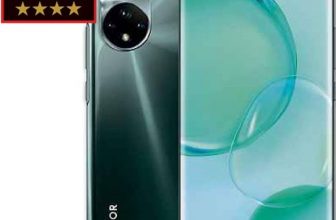Alcatel Pixi 4 (5) Review

A big-screen phone for a lot less

When the iPhone appeared in 2007, it changed our idea of what a mobile phone should be. It also changed how much we expected to pay for one. Smartphones started off pricier than their button-based ancestors, and they’ve got even more expensive since, with high-end models now. This one costs a tenth of that, putting it back within the budget of anyone who just wants a basic pocket device for phone calls, messaging, web browsing or entertainment.
If you want a basic pocket device, this is a real bargain
Like an old-school ‘dumbphone’, it has a plain plastic back that pops off to reveal the removable battery. SIM and optional microSD card. On the front is a 5in screen, which is physically big. but lacking in pixels: the 854×480-pixel resolution is better than the original iPhone, but strikingly coarse by today’s standards.
The Pixi 4’s nearest rival, Vodafone’s Smart Prime 7 (plus minimum top-up, from Vodafone), has a much sharper 1280×720 resolution.
With limited brightness and only 71 per cent of the sRGB color range, we found videos dull and grainy, while web pages with a lot of text could be hard to read.
The Pixi 4 (5) comes with Android 6 (Marshmallow) – not the latest version, but recent enough. Its 1GHz processor and 1GB of memory gave us slightly faster operation than the Smart Prime 7. but much slower than more expensive rivals in the range, such as the Motorola Moto G4 or Samsung Galaxy J5. The battery only lasted eight hours 17 minutes of video playback, compared to nearly 13 hours for the Smart Prime 7, and the 5-megapixel rear camera, which doesn’t let you touch the screen to pick where to focus, gave us grubby pictures.
Remarkably, there’s an even cheaper version of this phone – the Pixi 4 (4); with a smaller 4in screen and a different, no doubt slower, processor. You get just 4GB of storage, so you’d need to budget for a microSD card (see page 24) to add a maximum of 32GB.
With few direct rivals, the Pixi 4 (5)’s biggest selling point is that it works at all. The Smart Prime 7 is a bit pricier even before you pay to unlock it from Vodafone, but worth the extra.
SPECIFICATIONS
Sin 8S4x480-pixe( screen • S-megapixel rear camera • 2-megapixel front camera • 8GB flash storage microSD card slot • 802.11n WI-FI • Bluetooth 4.0 • 3C/4C • 141x73x9.5 mm (Hx WxD) • 169g • One-year warranty
VERDICT:
You wouldn’t want to switch to this from a mid-range device, but as a basic smartphone it’s an undeniable bargain
ALTERNATIVE:
Vodafone Smart Prime 7
If camera quality and battery life are important, this slightly faster phone will be a better choice
HOW CHEAP CAN SMARTPHONES GET?
There’s no official definition, but a ’smartphone’ generally means one that runs a mainstream operating system – Apple’s iOS. Google’s Android or Microsoft’s Windows 10 – and gives you access to a full range of third-party apps. Most cost and upwards to buy outright, while contracts work out more expensive.
Our favorite budget option, the Motorola Moto G4, although we’ve seen it discounted. At these prices the manufacturers make only a few’ pounds in profit, so they don’t think it’s worth building phones for less. Alcatel is a welcome exception.
Vodafone sells some cheap phones as a way of locking customers into its network tariffs. The Smart First 7, with a 3.5in screen, is just – but you have to buy at least of credit too, and if you want to switch networks it’s another. You can spend less on a phone, such as the Nokia 215, which just handles calls, music and messages, without access to a modern app store.
When you purchase through links on our site, I may earn an affiliate commission. Here’s how it works.








